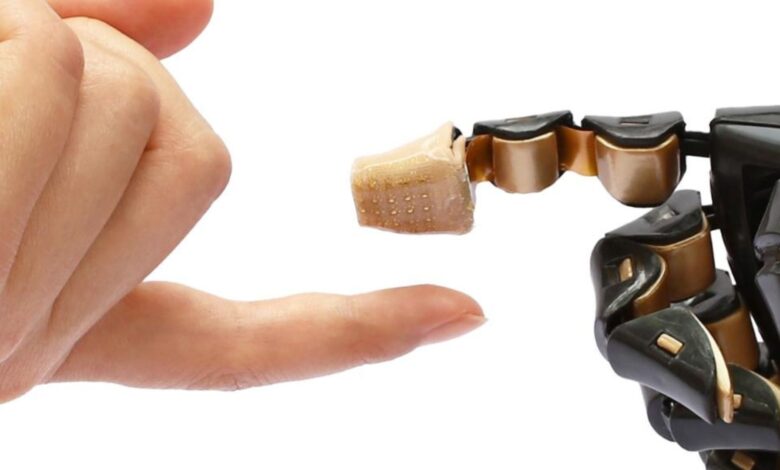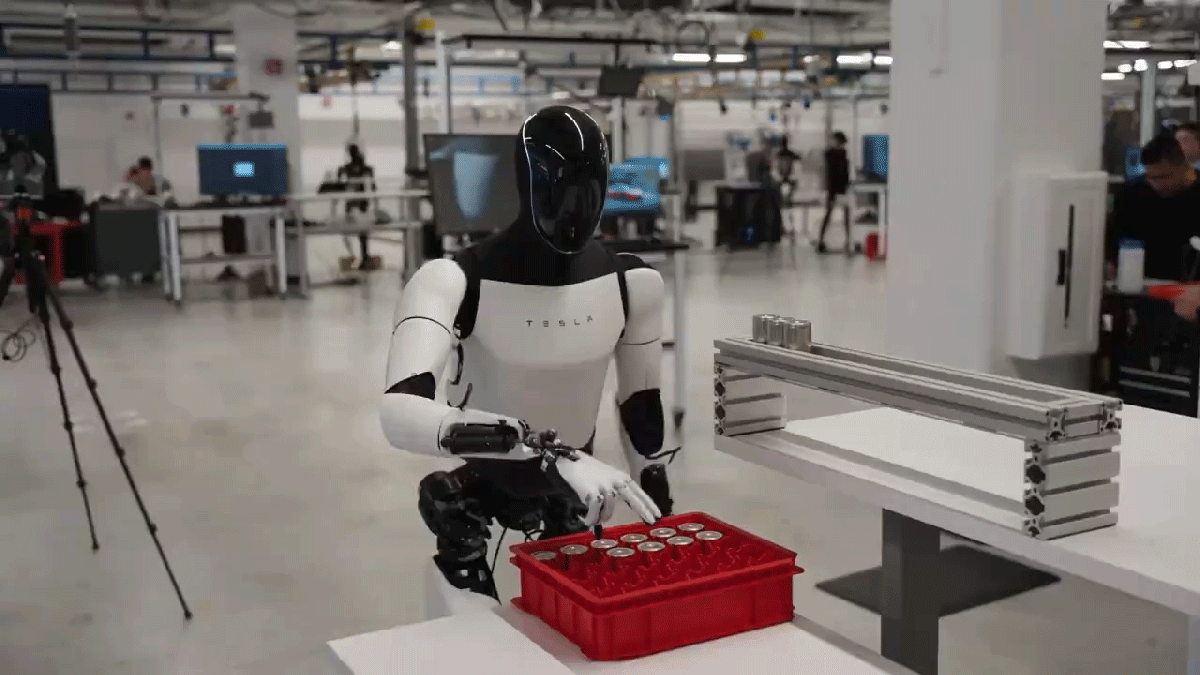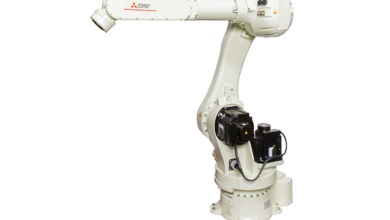World’s first 3D e-skin gives robots human-like touching sense

Chinese scientists have achieved a technological breakthrough with the development of a three-dimensional (3D) architected electronic skin. First reported by Xinhua News Agency, this innovation can be applied directly to the skin like a band-aid.
This can be used to monitor real-time health data of people with potential applications in biomedical diagnosis and humanoid robots. A brainchild of Professor Zhang Yihui from Tsinghua University, the electronic skin is capable of decoding and sensing three mechanical signals: pressure, friction, and strain.
Electronic skin mimics the sensory functions of human skin
Talking about the development, Professor Zhang revealed that electronic skin is a novel type of sensor that mimics the sensory functions of human skin.
“In the future, it can be installed on the fingertips of medical robots for early diagnosis and treatment, and can also be applied like a band-aid to human skin to monitor health data such as blood oxygen and heart rate in real-time,” he explained.
The electronic skin “has a lot of tactile receptor cells that are densely arranged and have a three-dimensional spatial distribution, which can accurately perceive external stimuli,” he further added.
The simultaneous decoding of pressure, friction, and strain signals presented a significant challenge in the development of this technology. The new electronic skin overcomes this hurdle with a structure mimicking human skin, comprising epidermis, dermis, and subcutaneous tissue.
Is electronic skin a first of its kind?
Electronic skins have been developed previously as well. Notable among them is the one developed by Stanford scientists last year with the ability to communicate directly with the brain and imitate real skin’s sensory feedback.
“We were inspired by the natural system and wanted to mimic it. Maybe we can someday help patients to not only restore motor function, but also restore their sensations,” Stanford University’s Weichen Wang had told Tech Xplore.
However, Professor Zhang’s team emphasizes that their innovation goes further. It could even imitate the sensory feedback of real skin. The team notes that when an electronic skin touches an external object, multiple sensors will operate together.
The signals gathered by the sensors undergo a series of transmissions and extractions and are then combined with deep learning algorithms. This process enables the electronic skin to accurately detect the softness, hardness, and shape of objects.
The resulting technology offers rapid measurement capabilities for friction coefficients and moduli of objects with various shapes. It has potential applications in diverse fields, including freshness assessment, biomedical diagnostics, humanoid robotics, and prosthetic systems.
Zhang conducted this study in collaboration with his colleagues from Tsinghua University’s Applied Mechanics Laboratory, Department of Engineering Mechanics, and Laboratory of Flexible Electronics Technology.
“The e-skin holds the potential to be integrated into the fingertips of medical robots for precise early-stage diagnostics and interventions,” Zhang told Xinhua.
“It can also be used as a band-aid to offer real-time monitoring of vital health metrics, including blood oxygen saturation and heart rate.”
ABOUT THE EDITOR
Gairika Mitra Gairika is a technology nerd, an introvert, and an avid reader. Lock her up in a room full of books, and you’ll never hear her complain.



